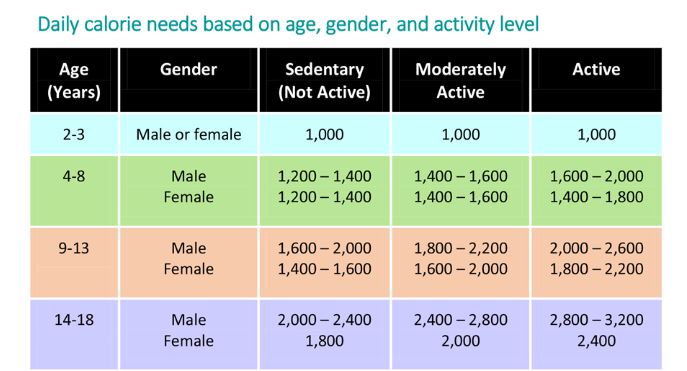In today’s world where everything is fast-paced, many parents don’t put a lot of thought into providing appropriate nutrition for their kids. To save time and meet-up with the demands of work, they serve their children with junk food and other unhealthy foods. But according to a publication on News-Medical, fast foods can lead to atopic disorders such as asthma, eczema or rhinitis.
Not only that: unhealthy foods have also been linked to poor academic performance. This is because high sugar intake through junk foods is subsequently followed by spontaneous sugar crashes and low concentration levels.
As a child-centred school, we understand the importance of good nutrition for kids. Therefore, in this article, we will provide guidelines that you can act on immediately to begin the journey of a healthy diet for your kids – and the entire family.

Before we dive into the guidelines, let’s list some of the benefits of a healthy nutrition for kids.
Benefits of Healthy Nutrition For Kids
The benefits of good nutrition for kids are numerous but we have listed a few of them below. Good nutrition:
- Stabilises the energy level of kids.
- Supports their healthy growth.
- Supports the brain development of children and their cognitive ability.
- Helps with the development of strong bones and teeth in children.
- Helps kids achieve and maintain a healthy weight
- Boosts their immune system and prevents the occurrence of chronic diseases
- Reduces the risk of developing health-related problems in adulthood like obesity, heart disease, high blood pressure, and type 2 diabetes.
- Lays a good foundation for their lifelong health.
- Predisposes children to make healthy food choices when they grow older.
But how do you provide your children with a healthy diet? Below are important guidelines to follow:
Essential Guidelines to a Healthy Diet for Kids
1. Give Your Kids a Nutritious Breakfast
You have probably heard that “Breakfast is the most important meal of the day.” It is an accurate claim, especially for children. Studies have shown that children who consume a healthy breakfast are creative, have better problem-solving skills, and do well in school.
When serving your kids’ breakfast, the priority should be on quality. Serve a highly nutritious breakfast because it helps jump-start their metabolism for the day and gives their bodies the needed nutrients and energy.
Choose breakfast meals that are rich in fibre and protein, low in added sugars, rich in healthy carbohydrates, and include vitamins and minerals. It doesn’t have to be time-consuming. It can be as simple as whole wheat bread, peanut butter and a glass of milk. For ideas on nutritious breakfasts to serve your kids, check out this article.
If making breakfast is a challenge for you due to time constraints, we have listed some tips that can help you.
Some tips to solve the healthy breakfast difficulty:
- Stock up your pantry with nutritious items that require less time to prepare.
- Items like fresh fruits and vegetables, whole-grain cereals and bread, eggs, milk and beverage should be readily available when you need them.
- Set out your cooking utensils and ingredients before the next morning
- Measure out portion-sized items needed for the meal ahead of time
- Chop fruits and vegetables that may be needed to prepare breakfast the next day.
If your kids don’t want a full breakfast, pack something quick and easy to eat or drink like a healthy smoothie. This will ensure that they consume something healthy in the morning.
2. Focus on the Quality of Your Kids’ Diet
A quality diet is both a balanced diet and a healthy one. Many parents know that their children should eat a balanced diet that contains carbohydrates, protein, fats and oil, vitamins and minerals. However, it is not enough to give your children food from the major food groups; you should also pay attention to the quality of food from these food groups too. Prioritise the healthy options over the unhealthy ones.

Some Tips on Choosing Healthy Food Sources:
- Choose healthy carbohydrates over processed and refined carbs.
Examples of healthy carbohydrates include whole grain options like whole wheat bread, brown rice, oats, and quinoa. They are more nutritious and provide more fibre than refined carbs like sugary cereals, white bread and processed snacks.
- Serve lean protein sources such as poultry, fish, eggs, beans, and lentils in your kids’ meals.
Prepare their proteins using healthy cooking methods like baking, grilling, or steaming. Do not rely solely on processed meats or fried options, as they can be high in unhealthy fats and sodium.
- Opt for healthy fats over unhealthy ones.
Healthy fats are found in avocados, nuts, seeds, and fatty fish such as Titus fish, salmon or mackerel. They provide omega-3 fatty acids, which are essential for cognitive function.
- Reduce consumption of saturated and trans fats.
These fats are unhealthy and are found in fried foods, margarine, baked foods, and processed foods.
- Go for fresh fruits and vegetables.
Buy fruits and vegetables that are plump, firm and have a vibrant colour; they should also have a sweet and earthy smell.
Additionally, when purchasing groceries like cereals and other edibles, do well to go through the ingredients list and nutritional value label on the packages to know the quality of ingredients used.
3. Measure and Control Portion Sizes
To achieve healthy nutrition for kids, measuring your children’s portion size is key. When serving them, pay attention to the quantity. Depending on your children’s age, gender and level of physical activity, there are daily recommended intakes.
The table below from healthychildren.org shows the recommended calorie intake for children.

Some Tips for Portion Control:
- Use smaller plates: This makes your kids’ portion look more satisfying without overloading the plate.
- Serve kid-sized portions: Serve portions appropriate for your children’s age and appetite.
- Encourage mindful eating: Teach your children to eat slowly, savour the meal and recognise when full.
- Limit distractions when eating: Limit your kids’ screen/phone time during meals to prevent mindless eating.
- Limit sugary beverages: Encourage water or milk instead of sugary drinks with empty calories.
- Serve desserts in moderation: Serve your children small portion sizes for desserts and limit them to special occasions.
4. Make Fruit and Vegetables Appealing to Eat
Some children struggle to eat fruits and vegetables, especially when their taste buds have become accustomed to processed food options. However, fruits and vegetables are vital for kids as they are rich in essential nutrients like vitamins, minerals, and dietary fibre. You can make your kids enjoy eating fruits and vegetables by making them appealing to eat.
There are creative ways to make them appealing. For instance, you can make a vegetable sandwich for your kids using veggies like cabbage, lettuce, cucumber or tomatoes. Be sure to add protein sources like chicken or meat strips and a healthy spread like homemade mayonnaise or butter for a balanced meal. Carrots, tomatoes, and cabbage can also be included in their rice and pasta. You can even make vegetable drinks like the famous carrot juice.
For fruits, smoothies – colourful ones – are a great option. They are healthy fruit drinks that kids find enjoyable. There is a variety of fruits to use in their smoothies like apples, watermelons, coconuts, bananas etc. You can also make fruit salads, and vegetable skewers, and involve your children in the cooking process.
The different options listed help to make consuming fruits and veggies exciting for your kids.
5. Limit Your Kids’ Intake of Processed Foods
Processed foods lack essential nutrients. They are also high in added sugars, unhealthy fats, and artificial additives. Limit your children’s consumption of these kinds of food.
Total avoidance of processed foods and snacks may be difficult, so you can restrict consuming them to special occasions instead of regularly. Make small shifts to healthier meals by preparing substitutes for the processed snacks that they usually enjoy. We suggest that you prioritise preparing healthy homemade snacks and meals for your children. Making snacks and meals from the beginning allows you to have control over the ingredients and methods of preparation.
Some examples of healthy homemade snacks for kids:
- Whole Wheat Baked Chin Chin
- African Salad
- Honey roasted peanuts
- Monster Trail Mix Bites
- Mango and banana smoothie
- Turkey and avocado toast
- Banana wheat bread
- Chewy honey granola bars
- Cornbread muffins with honey butter
- Almond coconut waffles
- Peanut butter banana roll-up
- Tuna and egg salad and so on
6. Model Healthy Eating Habits
Children observe and imitate the behaviours of their parents, including their eating habits. Therefore, being a good model by practising healthy eating habits is a powerful way to inspire and guide them toward making nutritious choices for themselves.

Here are some tips on how to model healthy eating habits for your kids:
- Show enthusiasm and interest in healthy foods.
- Ensure that there’s a variety of these foods in your home.
- Don’t stock up your home with junk or processed foods.
- Involve your kids in grocery shopping, meal planning and preparation: this involvement fosters a sense of ownership and curiosity about healthy foods.
- Ensure that you eat your meals together as a family. this way, your children can observe the priority you give to nutritious meals.
- Share your knowledge about nutrition with your children by informing them about the various food groups, nutrients and their benefits
In your role as a parent, you hold the key to shaping your child’s lifelong well-being. By providing your kids with good nutrition, you ensure they grow healthy, stay stronger and become smarter.
Although it demands deliberate planning, steadfast commitment, and substantial dedication, good nutrition for kids yields invaluable rewards for their present and future well-being.
By embracing these principles, you are laying the strong foundation your child needs for a healthy nutritional lifestyle.

